Affiliate links on Android Authority may earn us a commission. Learn more.
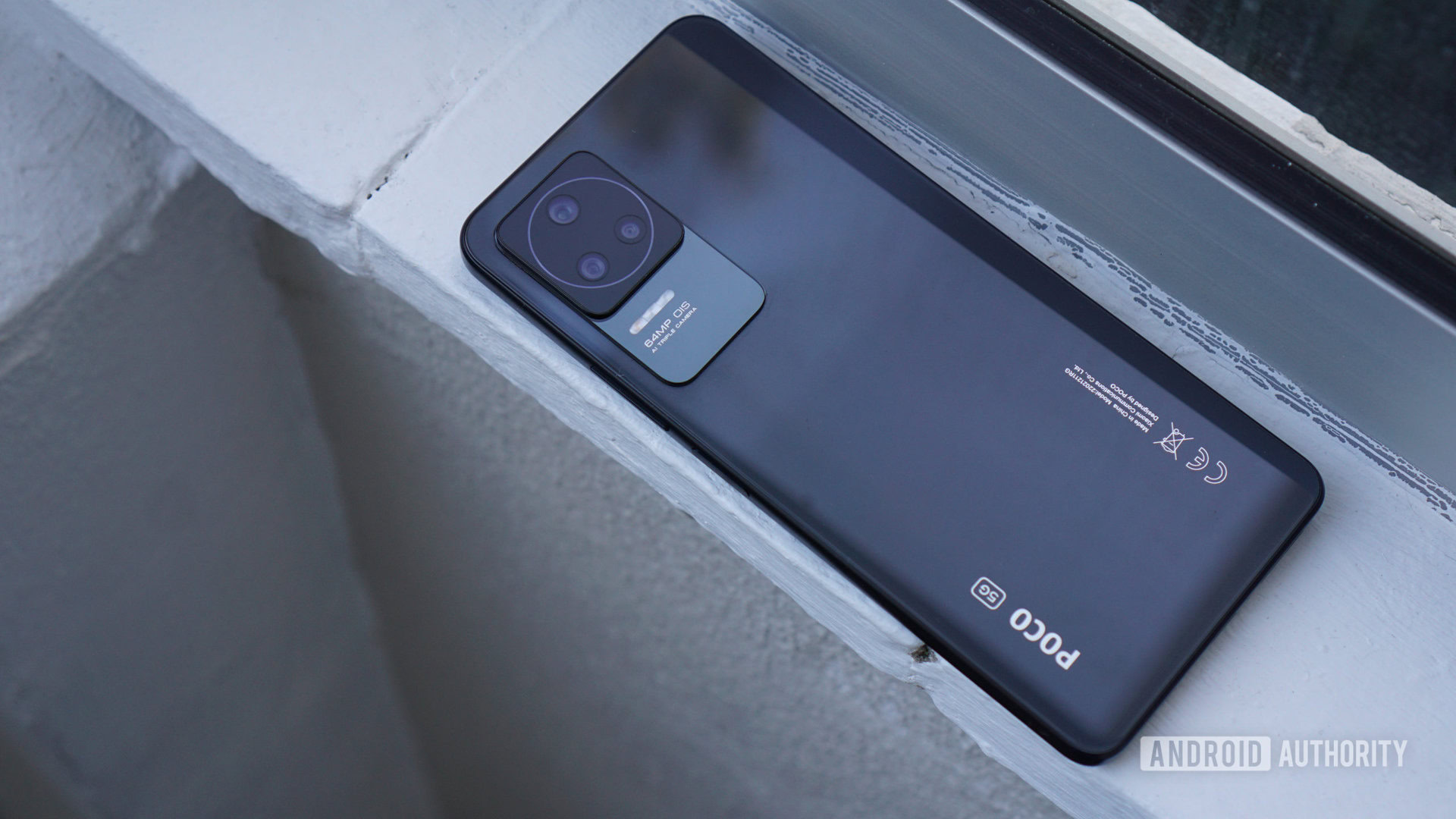
Poco F4
What we like
What we don't like
Poco F4
The Xiaomi-affiliated POCO brand debuted back in 2018 with the landmark POCO F1, standing out thanks to its flagship silicon and affordable price tag. The brand has spread its wings since then, tackling mid-range and low-end products while also offering its first ecosystem products. Nevertheless, you could argue that the POCO F series remains its most important range from a prestige point of view. POCO launched a new F series phone in 2022, but is it a worthy entry? It’s time to find out in our POCO F4 review.
Update, May 2023: We’ve added more info about the POCO F4’s latest firmware update.
What you need to know about the POCO F4
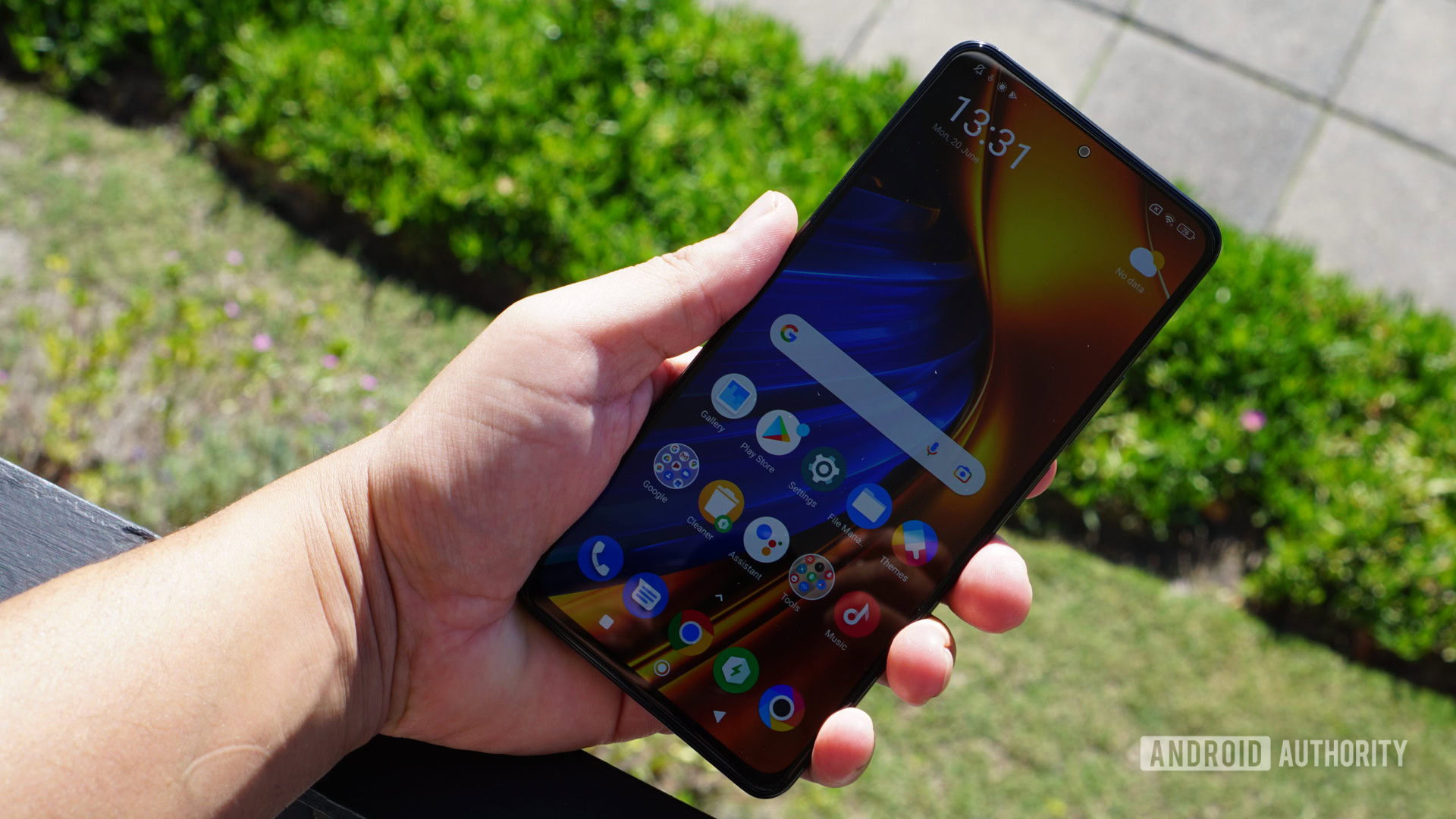
- POCO F4 (6GB/128GB): £379 / €399 (~$405)
- POCO F4 (8GB/256GB): £429 / €449 (~$455)
The POCO F4 is an upper mid-range offering in the POCO portfolio, positioned just below the gaming-focused POCO F4 GT but above phones like the POCO M4 family and POCO X4 Pro. It’s also worth noting that this is a rebranded version of the Redmi K40s. However, that Redmi device was a China-only phone, so this is effectively a new device for global markets.
Either way, it brings some noteworthy specs for the price. There’s the ever-popular Snapdragon 870 processor, a 6.67-inch 120Hz OLED panel, and 67W wired charging for that 4,500mAh battery. We’ve also got a 64MP rear camera, packing optical image stabilization for the first time in the series. Check out our dedicated camera review section for our thoughts on the POCO F4’s shooters.
Related: The best Xiaomi phones you can buy
In saying so, there are a few cutbacks to meet the price tag. The phone lacks wireless charging, full-fledged water resistance (IP53 only), and a telephoto camera, for one, though these features aren’t super-common on mid-range phones in the first place.
POCO offered early bird pricing of €349 for the 6GB/128GB option (tested) and €399 for the 8GB/256GB model, but they’re normally sold at €399 and €449, or starting from £379 in the UK. The POCO F4 comes in Moonlight Silver, Nebula Green, and Night Black color options. It is available to buy in Europe, the Middle East, and Southeast Asia from Xiaomi’s online store, Amazon, and selected other online retailers.
What’s good?
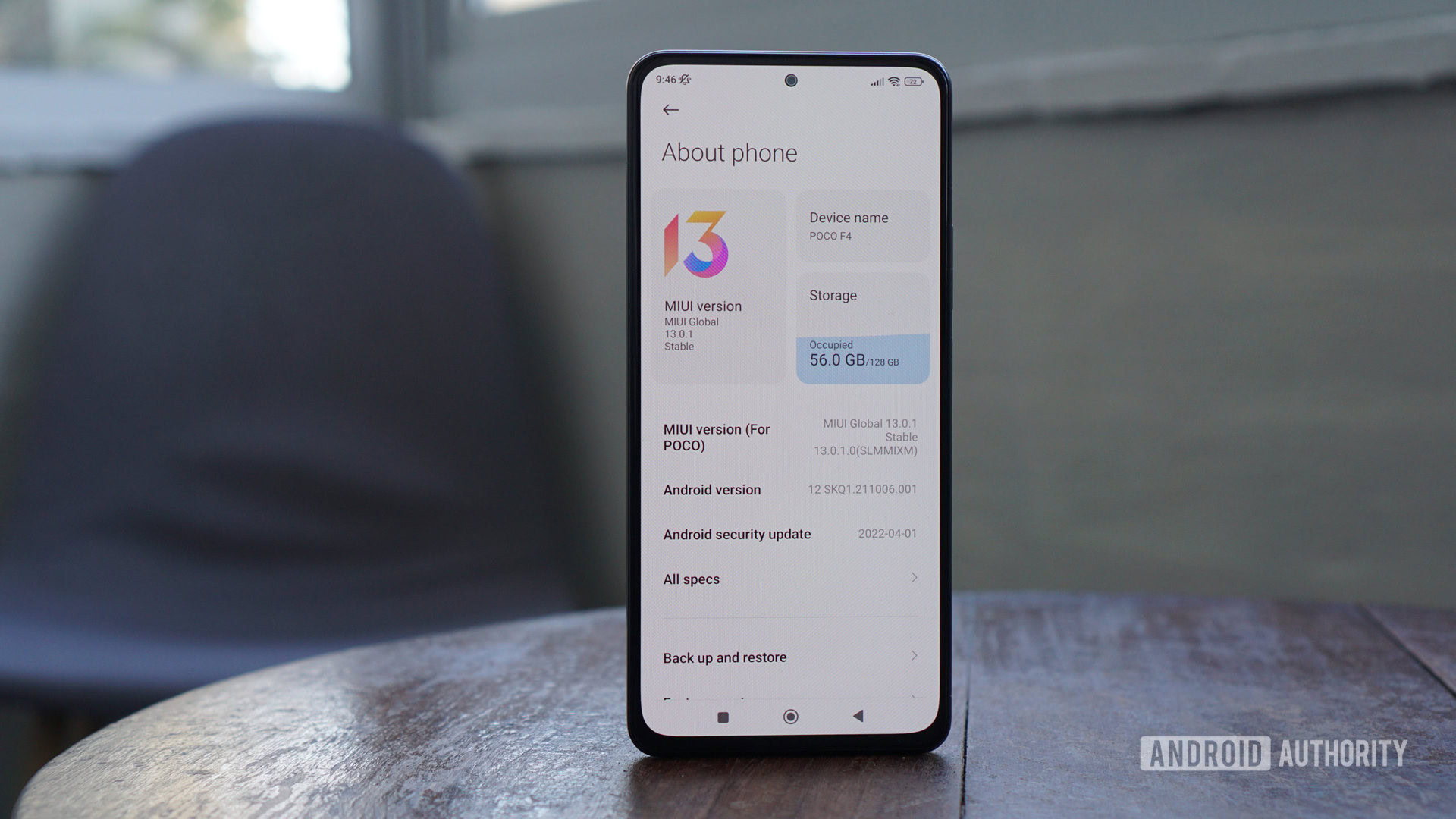
The POCO F4 — which is identical to the Redmi K40s, bar an added POCO logo — isn’t going to win any awards for its aesthetics. What’s here is mostly good though, featuring a relatively light design, flat edges, a remarkably tiny punch-hole cutout, and a very slippery glass back. The back is a total fingerprint magnet too, so you’ll want to slap this in a case as soon as possible. Fortunately, POCO includes a TPU case and screen protector in the box.
The phone has Gorilla Glass 5 on the front but there’s, unfortunately, no protection for the glass back. Still, I accidentally dropped the phone from roughly a meter onto my bathroom sink and it survived the ordeal just fine. I also dropped the phone from my office desk onto the floor and it seemed no worse for wear — curse that slippery back.
More reading: The best waterproof phones you can buy
Turn the phone on and you’ll find a 6.67-inch FHD+ OLED panel with a dynamic 120Hz refresh rate. This seems to be POCO and Xiaomi’s go-to panel for mid-rangers in 2022, but it’s still a good screen. The display was bright enough for viewing in direct sunlight and you’ve got those lovely blacks here too, although colors were a touch on the saturated side due to the vivid color profile being the default option. Thankfully, colors and the color temperature can be tuned accordingly.
The POCO F4's 120Hz OLED screen is a mid-range staple in 2022, but it still looks great.
Power-chasers might be a little disappointed that the POCO F4 retains the POCO F3’s Snapdragon 870 chipset, but the processor is still a very powerful platform. Plus, POCO has said it had no choice as Qualcomm didn’t have a follow-up chip with such a sharp price-to-performance ratio at the time. Benchmarks show that the phone offers good performance, occupying the slot between recent flagship phones and bona fide mid-rangers, which is what we’ve come to expect from the Snapdragon 870. The phone also did well in the 3DMark Wild Life stress test, offering impressive stability.
These benchmarks are reflected in real-world performance too, as general scrolling, web browsing, and multitasking worked just fine. I did notice some lag on the odd occasion, such as the icons occasionally taking a moment to populate the home screen after unlocking or the recent apps screen lagging for a second, but it never occurred often enough to be a problem.
The POCO F4 also acquits itself well when it comes to gaming, as titles like Call of Duty Mobile, Genshin Impact, and World of Tanks Blitz all delivered smooth performance. I also upped the frame rate to 60fps in Genshin Impact, and while I did see some stutters now and again, it was a fluid experience most of the time. Needless to say, the phone is worth a look if you want to play advanced games and emulated 3D games a couple of years down the line and have a limited budget.
See also: The best phones for gaming
One notable upgrade over the POCO F3 is the introduction of 67W wired charging compared to the previous phone’s 33W support. I was able to take the phone from zero to 100% in 45 minutes. That’s about seven minutes short of POCO’s own lab-tested claim of 38 minutes; a not insignificant discrepancy, but you’re still getting a fast-charging device on the cheap. Plus, POCO handily includes a 67W charger in the box.
Want a phone that won’t keep you tethered to a charger? Then the POCO F4 is pretty solid in terms of battery life, although not nearly as long-lasting as another, cheaper Xiaomi-related phone, the Redmi Note 11 Pro 5G. I managed to eke out about six hours of screen-on time across a day and a half with the adaptive refresh rate enabled. This period of usage included about 30 minutes of gaming, roughly two hours of YouTube viewing, as well as using Uber Eats, and browsing Reddit. That’s not a class-leading effort but it’s not a dunce either.
Finally, the phone’s side-mounted fingerprint scanner was extremely fast and accurate, and it didn’t get sticky as I found with the POCO F4 GT during my time with that device. Who says you need an in-display fingerprint sensor?
What’s not so good?

The POCO F4’s take on MIUI is pretty solid in terms of both features and polish. The POCO F3 was torpedoed by a litany of bugs at launch, but we didn’t experience any major issues during our POCO F4 review testing. Unfortunately, this is somewhat negated by the intrusiveness of the system ads on the new phone.
I specifically noticed these ads in POCO’s own file management, video, and music apps. I also got a notification from the Mi Video app to view a video for some reason. For what it’s worth you can remove most of these apps from your home screen (but not uninstall them), while tried-and-tested methods of disabling MIUI ads do work for the most part.
Either way, this is still annoying when one of POCO’s original strengths was the lack of system ads in the first place, which set them apart from alternatives from Redmi. Check out a few screenshots of some of the ads below.
Another area of concern with the software is the lack of any public long-term update pledge. When we asked about the POCO F4 GT previously, POCO told us that it was in discussions with Google to offer three years of OS updates and four years of security patches for its “performance” phones. We’ve asked the company about the POCO F4 in particular and the company didn’t get back to us with an answer. For now, though, there’s no guarantee for how long you’ll receive Android version and security updates. For what it’s worth, the device is now running MIUI 14 and Android 13 as of May 2023.
The POCO F4 has its fair share of bloatware too. Although it’s not quite the worst offender in the industry, you can expect to find several pre-installed games like Dust Settle, Facebook, Jewels Blast, Spotify, and Tile Fun. At least they can all be uninstalled.
System ads and a lack of an update guarantee take some of the shine off of the POCO F4's value.
Need to annoy passengers on public transport with obnoxious music? Then the new POCO device certainly brings plenty of volume, but the bottom-firing speaker is noticeably louder than the top speaker. I noticed this discrepancy now and again when watching some videos.
And finally, while the display is certainly a nice enough panel for a budget phone, I would’ve liked to see POCO offer more granular refresh rate functionality, such as a 90Hz option. It also seems like the phone doesn’t dip below 60Hz very often, as I only spotted the panel switching to 30Hz for the notification light pulse on the otherwise turned-off screen. It still stuck to 60Hz when viewing photos, watching YouTube videos, or reading ebooks.
POCO F4 camera review
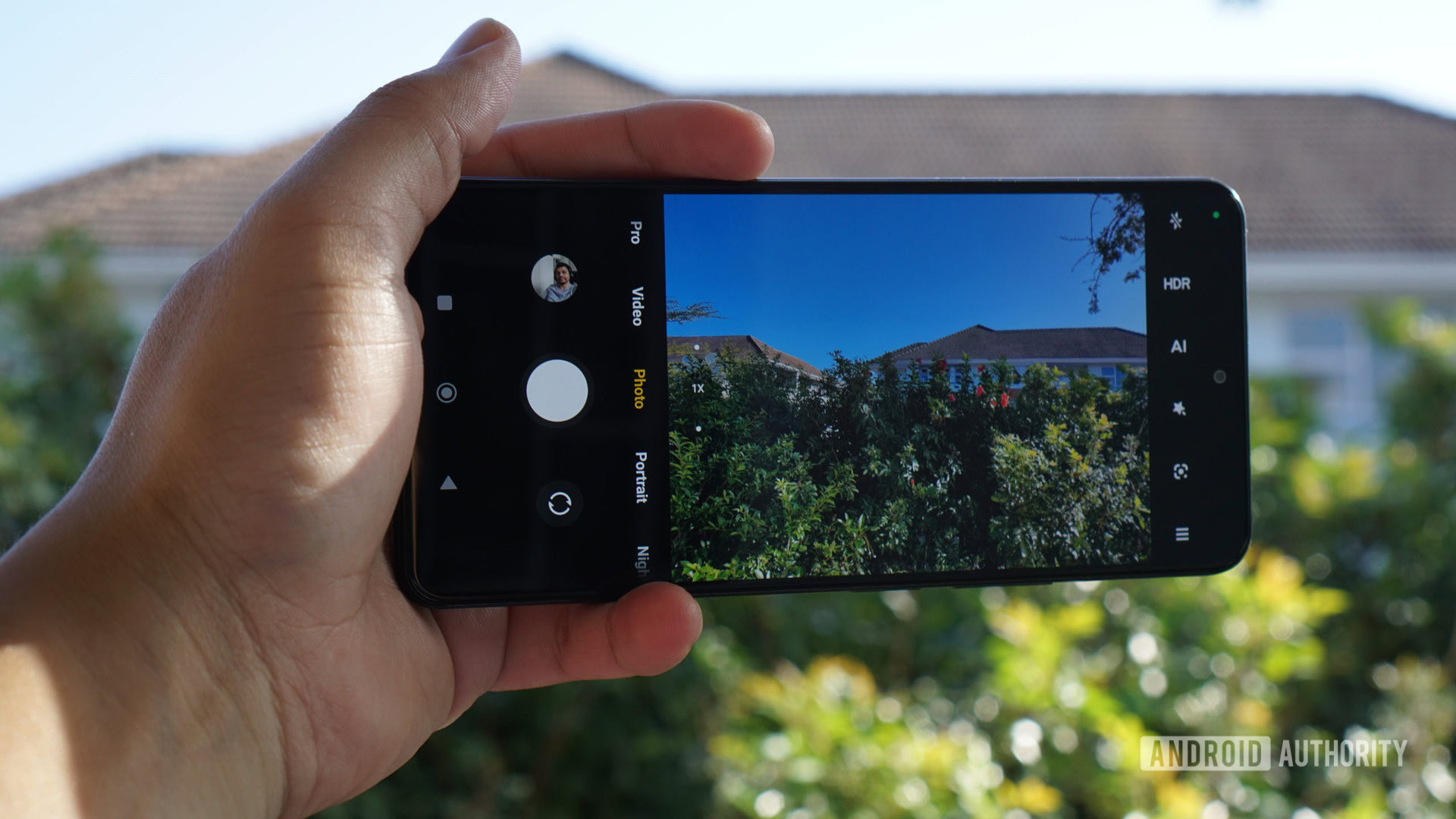
One of the POCO F4’s more notable upgrades is the primary camera, as it adopts a 64MP sensor with optical image stabilization (OIS). In comparison, the POCO F3 served up a 48MP shooter without OIS. Either way, the main shooter does a decent job during the day, offering a healthy level of detail, accurate exposure, and respectable dynamic range.
The camera isn’t perfect in these conditions though. Aside from some images just being a little too saturated, you’ll notice elevated levels of noise in darker areas of a photo (check out the foliage in the third image below) while the camera does sometimes deliver an over-sharpened image too. I also noticed that the POCO F4 is occasionally prone to lens flare and purple fringing when shooting some outdoor scenes, even if the sun isn’t directly in the scene.
Related: The best budget camera phones
The POCO F4 main camera does a solid job at night too, likely due to OIS enabling slower shutter speeds. You’re not going to get bright results in the default mode, but while the night mode isn’t a transformative affair either, it’s capable of visibly lifting the brightness and taming noise now and again. OIS isn’t really a boon for the phone’s long exposure modes, as you’d typically need to use a tripod anyway for best results. However, it does come in handy for more stable video (more on that in a bit).
The 8MP ultrawide is a token effort at most, as even brightly lit images will have shots with easily visible noise in the darker areas of the scene. You’re also looking at significantly inconsistent colors compared to the main shooter.
The 2MP macro lens also feels like an inclusion for the sake of it, as the fixed-focus works fine but images are a little too low-res for anything other than social media. It’s also a downgrade in theory over the POCO F3’s 5MP telemacro lens with autofocus.
The POCO F4’s 20MP selfie camera isn’t going to win any awards either, but it performs adequately. Images shot during the day give you enough resolvable detail for cropping, but there’s still a fair amount of grain visible in the scene. Indoor selfies are more inconsistent, varying between a relatively sharp image and a soft shot. The phone’s portrait selfie mode is fairly accurate too, although the background is blown out and there are minor cutout errors with my hair and shoulder in the image below.
Poco’s phone performs well enough when it comes to video recording, serving up punchy colors, accurate exposure, and a good level of detail in the shadows. There’s also a super steady video mode topping out at 1080p/30fps, making a notable difference in terms of reducing judder. You do see the jello effect now and again but it’s still a handy addition, especially when the POCO F3 lacked this option. Another feature missing from the previous phone was 4K/60fps recording, but it’s present on the POCO F4 and works well enough. However, you do understandably see more judder compared to the super steady mode.
The POCO F4 has plenty of camera options on-hand, too. There’s the aforementioned long exposure suite, 4K/60fps setting, and super steady video mode. But you’ve also got a clone mode (letting you create multiple instances of someone in a picture), vlog option, slow-motion (albeit topping out at 1080p/120fps or an interpolated 720p/960fps), time-lapse mode, and a movie effects suite. The latter includes modes like slow shutter effects (keeping a moving subject clear while blurring the background), time freeze functionality, and a Hitchcockian magic zoom feature.
POCO F4 specs
| POCO F4 | |
|---|---|
Display | 6.67-inch AMOLED FHD+ (2,400 x 1,080, 20:9) 120Hz refresh rate 360Hz touch sampling rate HDR10+ Gorilla Glass 5 |
Processor | Qualcomm Snapdragon 870 |
GPU | Adreno 650 |
RAM | 6/8GB LPDDR5 |
Storage | 128/256GB UFS 3.1 No microSD card support |
Power | 4,500mAh battery 67W fast wired charging In-box 67W charger No wireless charging |
Cameras | Rear: 1) 64MP main 1/2-inch sensor, 0.7μm, ƒ/1.79 Auto-focus, optical image stabilization 2) 8MP ultrawide 119-degree FoV, ƒ/2.2 3) 2MP macro, ƒ/2.4 Front: 1) 20MP, ƒ/2.45 |
Audio | Dual speakers Dolby Atmos No headphone jack |
Connectivity | USB-C Dual-SIM Wi-Fi 6 Bluetooth 5.2 NFC support IR blaster |
Bands | 2G: GSM: 850, 900, 1,800, 1,900MHz 3G: WCDMA: 1/2/4/5/6/8/19 4G: LTE FDD: 1/2/3/4/5/7/8/12/17/18/19/20/26/28 4G: LTE TDD: 38/40/41 5G: n1, n3, n5, n7, n8, n20, n28, n38, n40, n41, n77, n78 |
Security | Side-mounted fingerprint sensor Face unlock (insecure) |
Software | Android 12 MIUI 13 for POCO |
Dimensions and weight | 163.2 x 75.95 x 7.7mm 195g |
Colors | Moonlight Silver, Nebula Green, Night Black |
POCO F4 review: The verdict
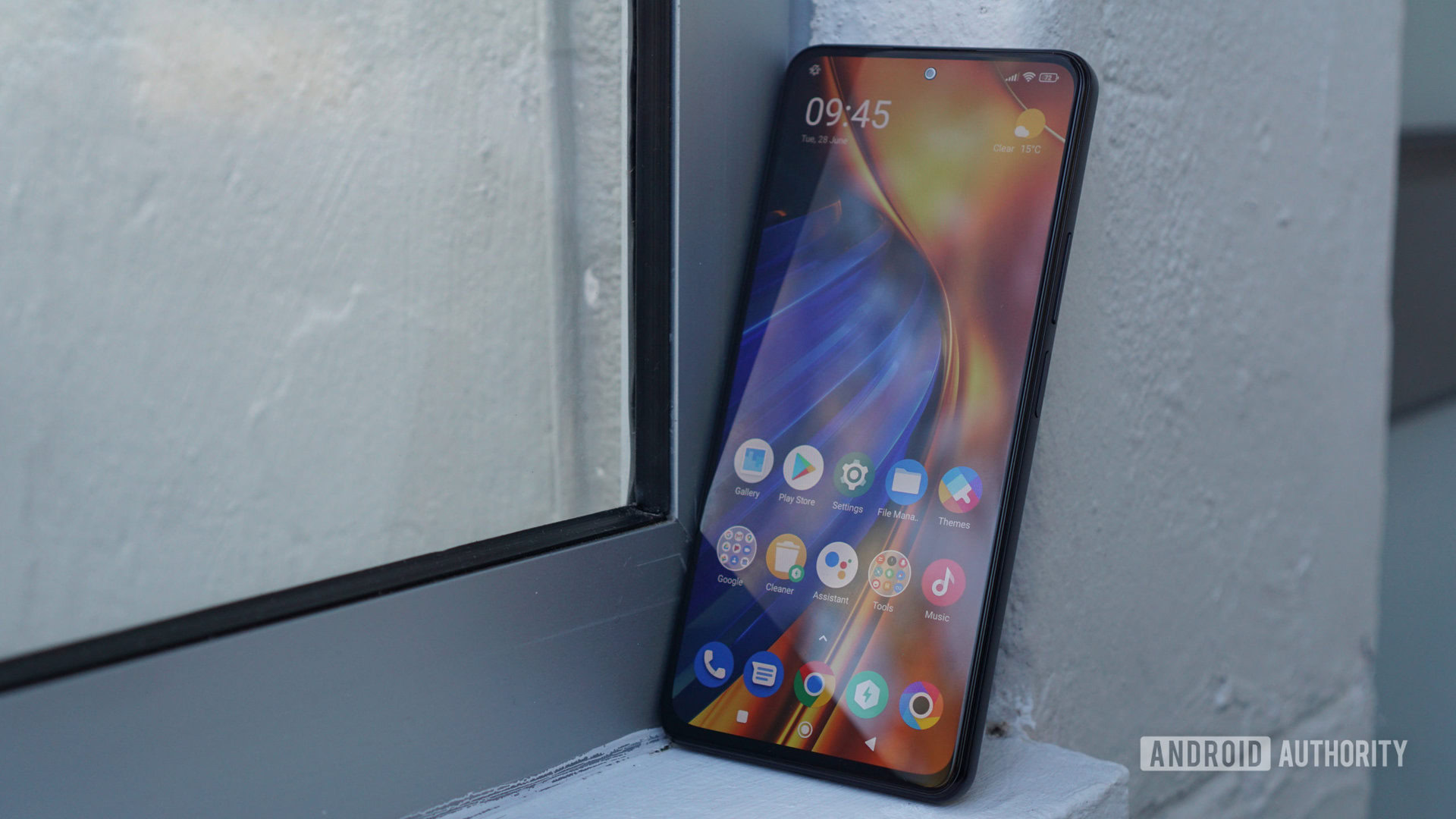
By its own merits, the POCO F4 is a pretty good release for £379/€399. The Snapdragon 870 still delivers plenty of performance, 67W charging is brisk enough to make charging feel like less of a chore, and the FHD+ 120Hz OLED screen makes for a pleasant viewing experience.
When judging the POCO F4 in the context of its predecessor, it’s clear the company did a decent job of fixing the previous phone’s flaws. But it seems like a double-edged sword in some ways. Sure, 67W charging is a lovely addition, but battery life isn’t the very best in its price tier. Yes, we’ve got an improved main camera, but the rest of the sensors are an afterthought. POCO polished the software experience out of the box this time, but system ads still sully the experience.
In terms of alternatives, the POCO F3 (£329) is probably the most logical rival right now if you like what you see and can live with the caveats. It lacks 67W charging and OIS, but you’re still getting the same powerful chipset, the same battery capacity, a similarly good screen, and a sharper macro lens. The full asking price is also cheaper than the POCO F4 and it goes for even lower on sale, plus many of the early bugs we encountered in our review have since been squashed.
The POCO F4 is a good budget phone with plenty of power, but the competition is strong.
Staying with the POCO family, the POCO F4 GT (£699) is a device worth considering if you’re a hardcore mobile gamer. You miss out on OIS for the main camera but do gain a more powerful processor, 120W charging, and some cool retractable shoulder buttons.
The Samsung Galaxy A53 5G ($449) is a strong phone worth considering over the POCO F4. You miss out on a flagship-level processor and fast charging but gain IP67 water resistance, a bigger battery, a better ultrawide camera, and an impressive commitment to updates.
The Pixel 6a ($449) hasn’t hit the market at the time of this writing, but considering Google’s pedigree with budget phones, it’s absolutely in contention. You’re getting a less fluid 60Hz OLED screen and much slower charging speeds. However, the Pixel brings an extended update commitment, Google’s AI-focused Tensor processor, exclusive software features, improved water resistance, and a dual rear camera system borrowed from the Pixel 5a that we already know delivers great image quality.
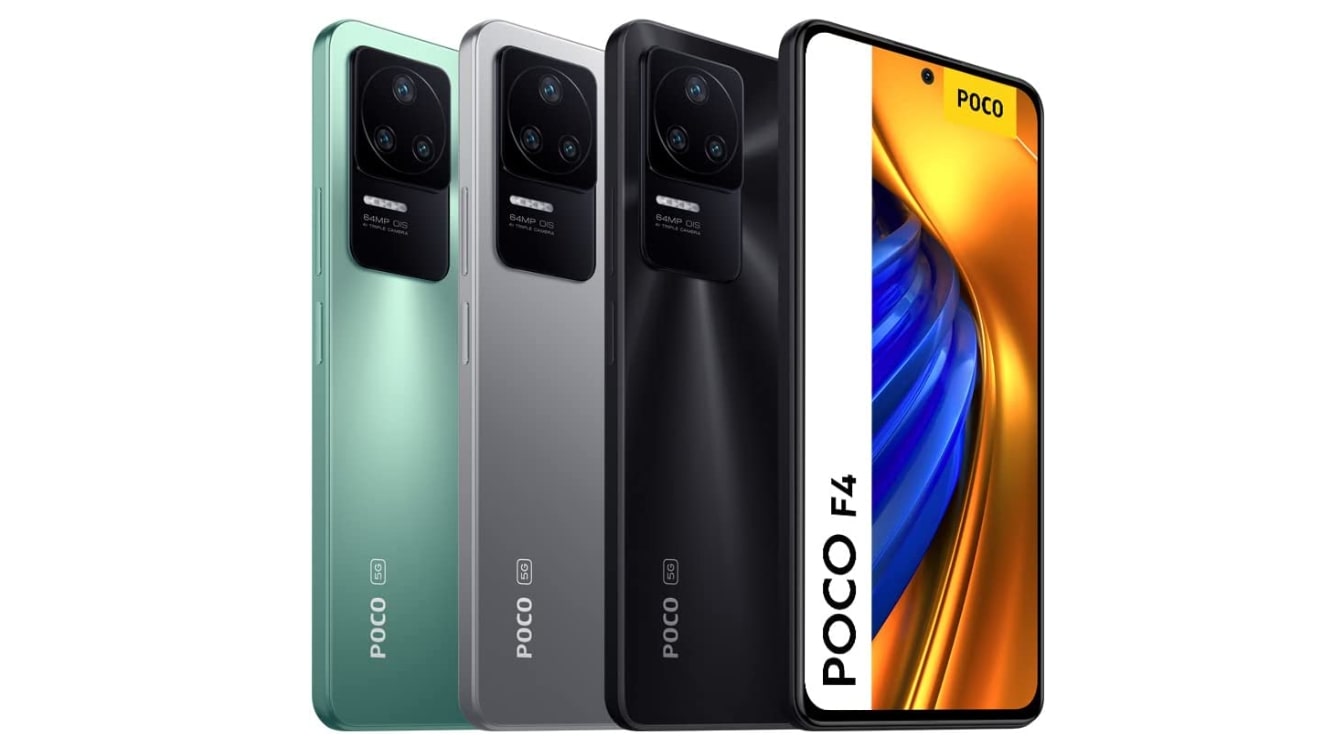
Top POCO F4 questions and answers
The POCO F4 has an IP53 rating for splash resistance, but it isn’t protected against immersion in water.
No, the POCO F4 only has fixed storage up to 256GB.
Yes, it has an IR blaster.
Yes, the POCO F4 supports sub-6GHz 5G (not mmWave).
No, the POCO F4 does not support wireless charging.